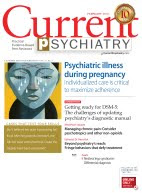Monday, August 2, 2010
Adolescents who self-harm
John Peterson, M, Director, child and adolescent psychiatry, Denver Health Medical Center, Associate professor, Department of psychiatry, University of Colorado School of Medicine, Denver, CO
Stacey Freedenthal, PhD, Associate professor, Graduate School of Social Work, University of Denver, Denver, CO
Adam Coles, MD, Resident Department of psychiatry, University of Colorado School of Medicine, Denver, CO
Josh, age 16, gets poor grades in school and occasionally smokes marijuana and abuses inhalants. After his girlfriend breaks up with him, he cuts his wrist with a hunting knife. While bleeding profusely, Josh calls his mother at work, who calls 911. The cut is deep and requires sutures. Josh says he did not try to kill himself; he only wanted to carve his girlfriend’s initials into his wrist to show his love for her.
When treating teenagers with self-harming thoughts and behavior, it may be difficult to distinguish suicide attempts from self-injury without intent to die. Understanding adolescent self-harm, suicide risk assessment, and treatment options guides clinicians to appropriate interventions. Recognizing the need for aggressive treatment—including psychiatric hospitalization—is essential to keeping self-harming teenagers safe.
Read full text (free access)
Comment on this article
Email the editor
Subscribe to:
Post Comments (Atom)


No comments:
Post a Comment